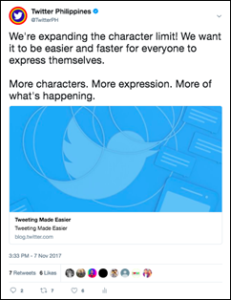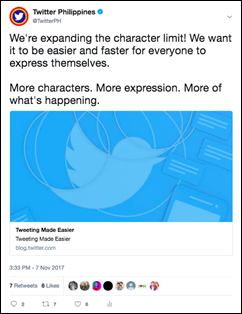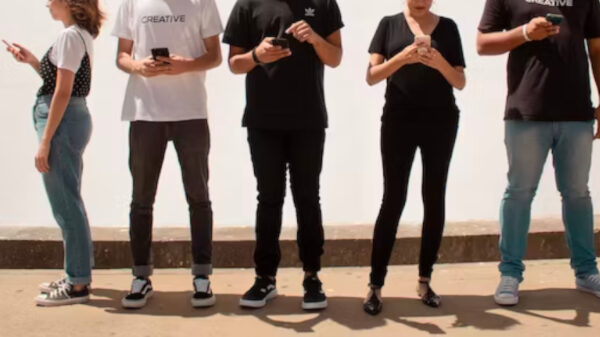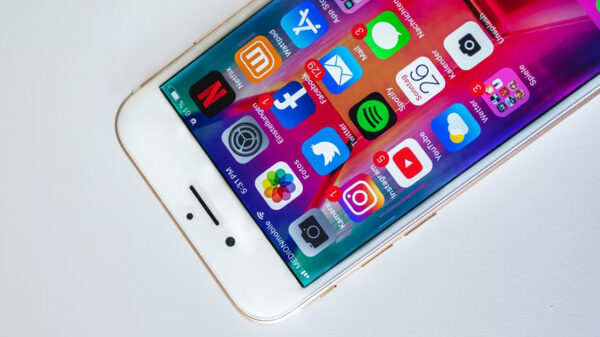 After successfully piloting a test that expanded the 140 character limit in September, Twitter today announced that it is rolling out the 280 character limit to languages where cramming was an issue so that every person around the world could express themselves easily in a Tweet.
After successfully piloting a test that expanded the 140 character limit in September, Twitter today announced that it is rolling out the 280 character limit to languages where cramming was an issue so that every person around the world could express themselves easily in a Tweet.
During the first few days of the test many people Tweeted the full 280 limit because it was new and novel, but soon after behavior normalized, Twitter data confirms that users Tweeted more easily and more often, especially when they needed to use more than 140 characters. But importantly, people Tweeted below 140 most of the time and the brevity of Twitter remained. Detailed information about this can also be read at the Twitter blog.
Easier to Tweet
Historically, 9% of Tweets in English hit the character limit. This reflects the challenge of fitting a thought into a Tweet, often resulting in lots of time spent editing and even at times abandoning Tweets before sending. With the expanded character count, this problem was massively reduced – that number dropped to only 1% of Tweets running up against the limit. Since Tweets hit the character limit less often, Twitter observed that people spent less time editing their Tweets in the composer. This shows that more space makes it easier for people to fit thoughts in a Tweet, so they could say what they want to say, and send Tweets faster than before.
Keeping Twitter’s brevity
In the timeline, Tweets with an image or poll usually take up more space than a 190 character Tweet. Many Twitter users were concerned that timelines may fill up with 280 character Tweets, and people with the new limit would always use up the whole space. This was not the case, however, as only 5% of Tweets sent were longer than 140 characters and only 2% were over 190 characters. As a result, Twitter timeline reading experience will not substantially change, and Twitter users will still see about the same amount of Tweets in their timeline.
“People in the test got very excited about the extra space in the beginning and many Tweets went way beyond 140,” said Aliza Rozen, Product Manager, Twitter. “People did silly (creative!) things like writing 1 character per line to make their Tweets extra large. It was a temporary effect, and didn’t last long. We’ll definitely see some of this novelty effect spike again with this week’s launch and expect it to resume to normal behavior soon after.”
Engagement
In addition to more Tweeting, people who had more room to Tweet received more engagement (Likes, Retweets, @mentions), got more followers, and spent more time on Twitter. People in the experiment noted that a higher character limit made them feel more satisfied with how they expressed themselves on Twitter, their ability to find good content, and Twitter overall.
“We are making this change after listening and observing a problem our global community was having (it wasn’t easy enough to Tweet!), studying data to understand how we could improve, trying it out, and listening to your feedback,” said Rozen. “We’ll continue listening and work to make Twitter easier for everyone, while making sure we keep what you love.”
Twitter notes that Japanese, Korean, and Chinese will continue to have 140 characters because cramming is not an issue in these languages. In fact, these languages have always been able to say more with their Tweets because of the density of their writing systems.

















































































































